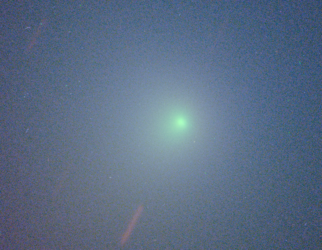Accept all cookies Accept only essential cookies See our Cookie Notice

About ESA
The European Space Agency (ESA) is Europe’s gateway to space. Its mission is to shape the development of Europe’s space capability and ensure that investment in space continues to deliver benefits to the citizens of Europe and the world.
Highlights
ESA - United space in Europe
This is ESA ESA facts Member States & Cooperating States Funding Director General Top management For Member State Delegations European vision European Space Policy ESA & EU Responsibility & Sustainability Annual Report Calendar of meetings Corporate newsEstablishments & sites
ESA Headquarters ESA ESTEC ESA ESOC ESA ESRIN ESA EAC ESA ESAC Europe's Spaceport ESA ESEC ESA ECSAT Brussels Office Washington OfficeWorking with ESA
Business with ESA ESA Commercialisation Gateway Law at ESA Careers Cyber resilience at ESA IT at ESA Newsroom Partnerships Merchandising Licence Education Open Space Innovation Platform Integrity and Reporting Administrative Tribunal Health and SafetyMore about ESA
History ESA Historical Archives Exhibitions Publications Art & Culture ESA Merchandise Kids Diversity ESA Brand Centre ESA ChampionsLatest
Space in Member States
Find out more about space activities in our 23 Member States, and understand how ESA works together with their national agencies, institutions and organisations.
Science & Exploration
Exploring our Solar System and unlocking the secrets of the Universe
Go to topicAstronauts
Missions
Juice Euclid Webb Solar Orbiter BepiColombo Gaia ExoMars Cheops Exoplanet missions More missionsActivities
International Space Station Orion service module Gateway Concordia Caves & Pangaea BenefitsLatest
Space Safety
Protecting life and infrastructure on Earth and in orbit
Go to topicAsteroids
Asteroids and Planetary Defence Asteroid danger explained Flyeye telescope: asteroid detection Hera mission: asteroid deflection Near-Earth Object Coordination CentreSpace junk
About space debris Space debris by the numbers Space Environment Report In space refuelling, refurbishing and removingSafety from space
Clean Space ecodesign Zero Debris Technologies Space for Earth Supporting Sustainable DevelopmentLatest
Applications
Using space to benefit citizens and meet future challenges on Earth
Go to topicObserving the Earth
Observing the Earth Future EO Copernicus Meteorology Space for our climate Satellite missionsCommercialisation
ESA Commercialisation Gateway Open Space Innovation Platform Business Incubation ESA Space SolutionsLatest
Enabling & Support
Making space accessible and developing the technologies for the future
Go to topicBuilding missions
Space Engineering and Technology Test centre Laboratories Concurrent Design Facility Preparing for the future Shaping the Future Discovery and Preparation Advanced Concepts TeamSpace transportation
Space Transportation Ariane Vega Space Rider Future space transportation Boost! Europe's Spaceport Launches from Europe's Spaceport from 2012Latest

Rosetta comet observed with Very Large Telescope
Thank you for liking
You have already liked this page, you can only like it once!
Since early August 2014, Rosetta has been enjoying a close-up view of comet 67P/Churyumov–Gerasimenko. Meanwhile, astronomers on Earth have been busy following the comet with ground-based telescopes. As Rosetta is deep inside the ‘atmosphere’ coma – it was 100 km from the nucleus on 6 August, and has been getting much closer since then – the only way to view the whole comet is to ‘stand back’ and observe it from Earth.
This image was recorded on 11 August 2014 using one of the 8 m-diameter telescopes of the European Southern Observatory’s Very Large Telescope in Chile.
Although faint, the comet is clearly active, revealing a dusty coma extending at least 19 000 km from the nucleus. The comet's dusty veil is not symmetrical as the dust is swept away from the Sun – located beyond the lower-right corner of the image – to begin forming a tail.
At the moment, the comet is visible only from the southern hemisphere and, at more than 500 million km from the Sun, it is still very faint. In addition, it currently sits in a patch of the sky where it is camouflaged against the crowded starry background of the Milky Way. For these reasons, the image was compiled by superimposing 40 individual exposures, each lasting about 50 seconds, and removing background stars.
A large collaboration of astronomers across the world has been working to make the most of the unique opportunity to observe the comet from the ground while Rosetta is performing measurements at the comet. The Very Large Telescope is taking images every two nights on average. These short exposures monitor the comet’s activity by studying how its brightness changes. The results are used by the Rosetta team to help plan spacecraft operations.
Read more about the ground-based campaign and view more images on the Rosetta blog.
-
CREDIT
C. Snodgrass/ESO/ESA -
LICENCE
ESA Standard Licence

Comet 67P/Chryumov-Gerasimenko observed with Very La…

Comet 67P/CG on 5 Oct 2013

Comet Churyumov–Gerasimenko on 28 February 2014

Comet from Earth – 22 May 2015















 Germany
Germany
 Austria
Austria
 Belgium
Belgium
 Denmark
Denmark
 Spain
Spain
 Estonia
Estonia
 Finland
Finland
 France
France
 Greece
Greece
 Hungary
Hungary
 Ireland
Ireland
 Italy
Italy
 Luxembourg
Luxembourg
 Norway
Norway
 The Netherlands
The Netherlands
 Poland
Poland
 Portugal
Portugal
 Czechia
Czechia
 Romania
Romania
 United Kingdom
United Kingdom
 Slovenia
Slovenia
 Sweden
Sweden
 Switzerland
Switzerland
























